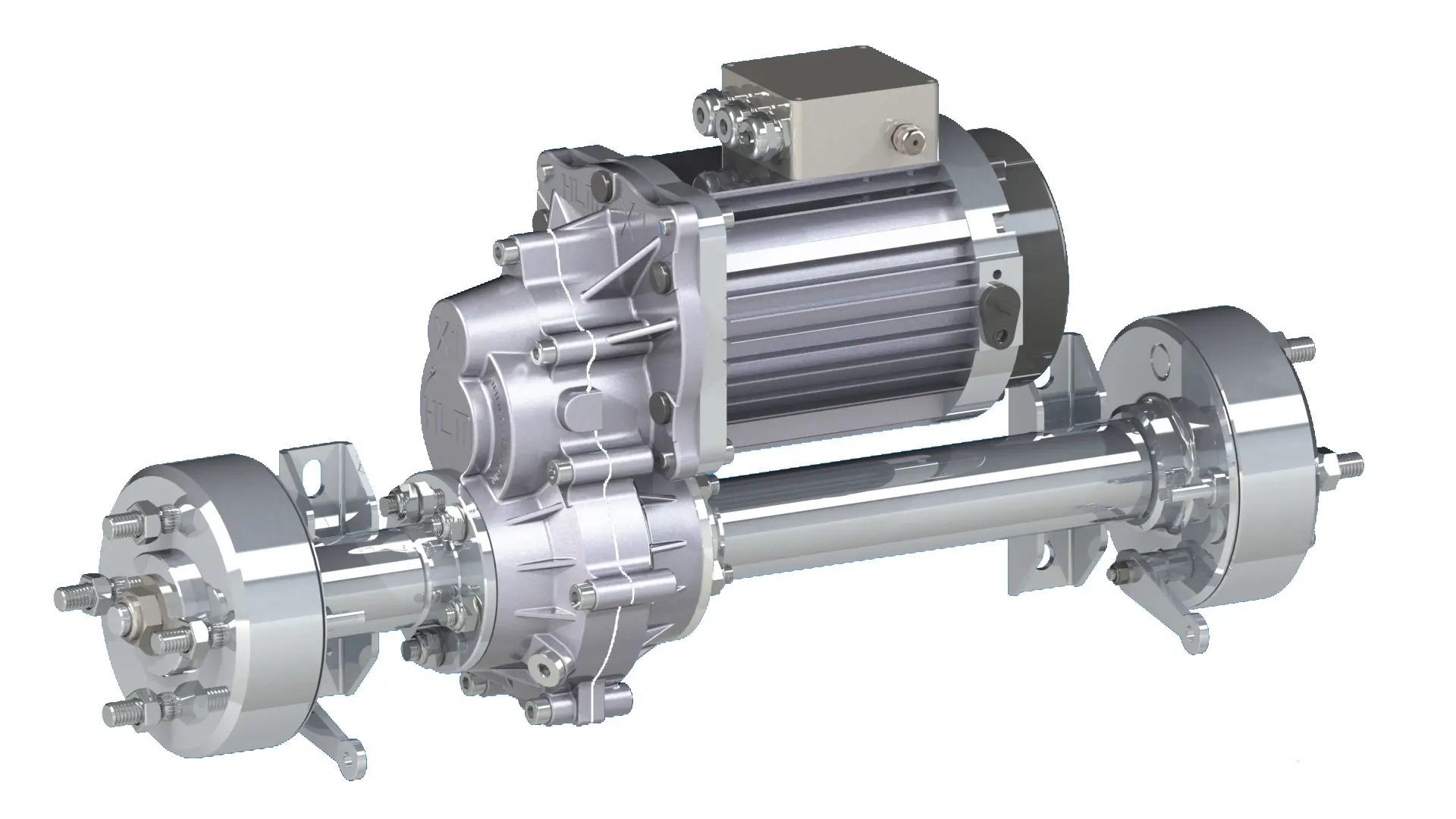Introduction
As the automotive industry continues to shift towards electrification, electric transaxles are becoming increasingly important. However, questions about their efficiency in winter conditions arise. This blog post will explore how efficient electric transaxles are in winter and
discuss various related aspects.
The Impact of Winter on Electric Transaxle Efficiency
Battery Performance: Lithium-ion batteries, which power electric transaxles, have an optimal temperature range of 15°C to 35°C. Below -6°C, the electrochemical reactions in battery cells slow down, leading to reduced energy production and impaired high-rate discharges. This decrease in battery efficiency can significantly affect the overall performance and efficiency of electric transaxles. For instance, CATARC’s 2023 winter tests showed that at -10°C, the actual capacity of lithium iron phosphate batteries dropped to 76%.
Lubricant Viscosity: In winter, the viscosity of lubricants used in electric transaxles increases. This makes it harder for gears to mesh and increases mechanical losses, thereby reducing the efficiency of power transmission. Some industry reports indicate that at -10°C, the starting torque of gearboxes using ordinary lubricants can be several times higher than under normal temperature conditions.
Regenerative Braking Efficiency: Regenerative braking systems are less effective in cold weather. Due to reduced battery efficiency and frequent slowdowns or stops on snow-covered roads, the energy that can be recovered through regenerative braking is limited, which affects the overall energy recovery efficiency of the electric transaxle system.
Thermal Management System Load: To maintain the battery and other components within their optimal temperature ranges in winter, electric vehicles need to rely on heating devices such as PTC heaters or heat pumps. These devices consume a significant amount of electrical energy, placing a greater load on the thermal management system and reducing the energy available for the electric transaxle to drive the vehicle.
Testing and Performance of Electric Transaxles in Winter
Efficiency Tests: In a -20°C environment, the efficiency of a new powerhouse’s electric bridge dropped from 91% to 74%. At -20°C, a new EV manufacturer’s winter tests revealed that the electric transaxle efficiency decreased from 91% to 74%, regenerative braking power attenuation reached 63%, and each cold start consumed 8-12km of range for self-heating.
Component Reliability Tests: Extreme cold can affect the reliability of various components in electric transaxles. For example, at -25°C, rubber seals’ compression set rate reaches 58%, increasing the risk of oil leaks. At -20°C, the motor controller response delay suddenly to spikes six times that of normal temperatures.
Technologies and Solutions to Improve Electric Transaxle Efficiency in Winter
Battery Preheating and Thermal Management:
Using the vehicle’s app to activate battery heating in advance can improve battery efficiency in winter. For example, using the Tesla APP to preheat the battery 20 minutes in advance consumes 7% of the battery power and can increase low-temperature endurance by 19%.
CATL’s “intelligent pulse heating” can warm batteries from -30°C to -10°C in 15 minutes, consuming 7% of the energy. BYD’s dual-loop system engine utilizes waste heat to reduce winter range loss by 23%.
Lubricant Selection and Optimization: Choosing high-quality, low-temperature lubricants with high viscosity indexes, low pour points, and good demulsibility is crucial. For instance, Shell Rimula R6E lubricant can flow at -45°C. In -28°C conditions last winter, equipment using this lubricant started 22 seconds faster.
Gearbox Design and Material Innovation: ZF has developed a gearbox oil mixed with nano-ceramic particles. Live demos showed that at -30°C, gearbox starting torque dropped by 40%. Schaeffler’s “adaptive viscosity lubricant” stays thin at low temperatures but thickens via nanoparticle alignment during operation. Lab data indicates an 11% improvement in efficiency at -30°C.
Smart Control Strategies: When sensors detect temperatures below -15°C, vehicle control strategies can forcibly reduce torque output by 20% to protect components while maintaining vehicle operability. Additionally, using motor waste heat to warm gear oil and other innovative control strategies can enhance the efficiency of electric transaxles in winter.
Case Studies
NIO ET7 Prototypes: After being soaked at -25°C for 24 hours, NIO ET7 prototypes used PTC heaters to warm the batteries and then utilized inverter waste heat to heat the gear oil. This approach saved 40% of the energy compared to traditional methods.
A Shandong Special Vehicle Factory: By applying missile bay insulation to electric transaxles, this factory achieved 62% lower energy costs than civilian solutions while maintaining key components above -5°C in -40°C conditions.
Conclusion
Electric transaxles face several challenges in winter, including reduced battery efficiency, increased lubricant viscosity, and higher loads on thermal management systems. However, through technologies like battery preheating, optimized lubricant selection, innovative gearbox design, and smart control strategies, the efficiency of electric transaxles in winter can be significantly improved. As research and development in the electric vehicle industry continues to advance, the performance and efficiency of electric transaxles in winter will only get better.
Post time: May-16-2025


